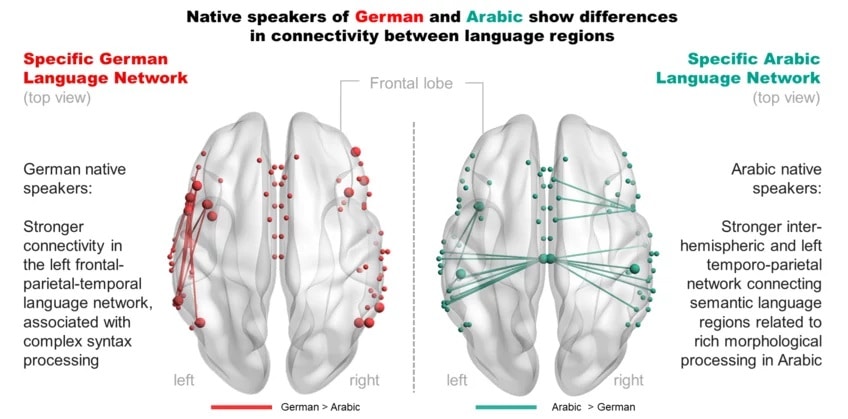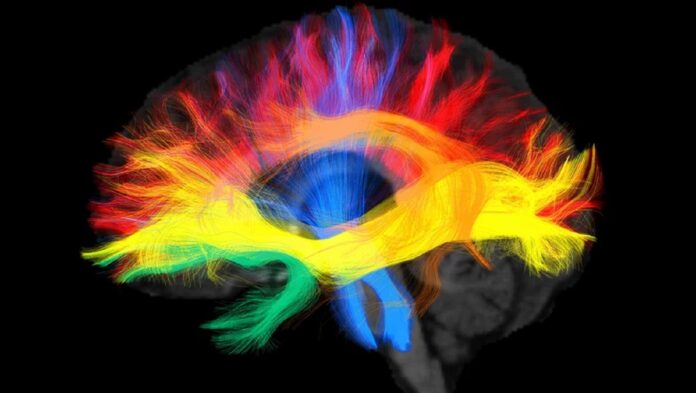Over the decades, neuroscientists have revealed an elaborate and extensive language processing system in the human brain. Previous studies have shown that human brain functions are influenced by cross-cultural differences, which are dominated by language diversity. However, it is still an open question whether the characteristics of a particular language impact brain structure.
Is the neuroanatomy of the language structural connectome modulated by the life-long experience of speaking a specific language?
A new study by the Max Planck Institute for Human Cognitive and Brain Sciences in Leipzig compared the brain white matter connections of the language and speech production network in a large cohort of 94 native speakers of two very different languages: an Indo-European morphosyntactically complex language (German) and a Semitic root-based language (Arabic).
Scientists found that the language we speak shapes the connectivity in our brains that may underlie the way we think.

Using magnetic resonance tomography, scientists observed the brains of native German and Arabic speakers and discovered differences in the wiring of the language regions in the brain. The high-resolution images not only show the brain’s anatomy but also allow us to derive the connectivity between the brain areas using a technique called diffusion-weighted imaging. The data showed that the axonal white matter connections of the language network adapt to the processing demands and difficulties of the mother tongue.
German native speakers exhibited stronger connectivity in an intra-hemispheric frontal to parietal/temporal dorsal language network associated with complex syntax processing. In comparison, Arabic native speakers showed stronger connections between semantic language regions, including the left temporoparietal network, and stronger inter-hemispheric connections via the posterior corpus callosum connecting bilateral superior temporal and inferior parietal regions.
Alfred Anwander, the last author of the study, said, “This strengthening was also found between semantic language regions and may be related to the relatively complex semantic and phonological processing in Arabic.”
“Brain connectivity is modulated by learning and the environment during childhood, which influences processing and cognitive reasoning in the adult brain. Our study provides new insights into how the brain adapts to cognitive demands, that is, the structural language connectome is shaped by the mother tongue.”
The findings could help scientists understand cross-cultural processing differences in the brain. In the future, scientists look forward to analyzing longitudinal structural changes in the brains of Arabic-speaking adults as they learn German over six months.
Journal Reference:
- Xuehu Wei et al, Native language differences in the structural connectome of the human brain, NeuroImage (2023). DOI: 10.1016/j.neuroimage.2023.119955
